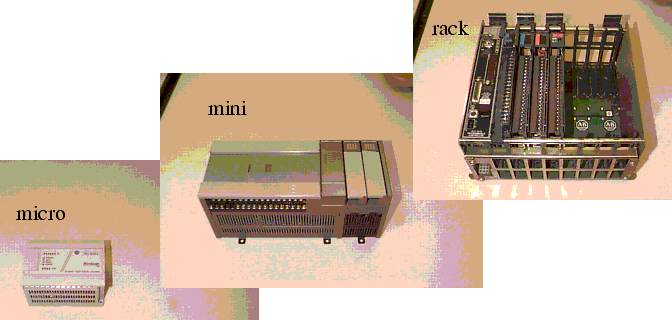
|
|
|
3.1 INTRODUCTION
������������Many PLC configurations are available, even from a single vendor. But, in each of these there are common components and concepts. The most essential components are:
Power Supply - This can be built into the PLC or be an external unit. Common voltage levels required by the PLC (with and without the power supply) are 24Vdc, 120Vac, 220Vac.
I/O (Input/Output) - A number of input/output terminals must be provided so that the PLC can monitor the process and initiate actions.
Indicator lights - These indicate the status of the PLC including power on, program running, and a fault. These are essential when diagnosing problems.
The configuration of the PLC refers to the packaging of the components. Typical configurations are listed below from largest to smallest as shown in Figure 14.
Rack - A rack is often large (up to 18" by 30" by 10") and can hold multiple cards. When necessary, multiple racks can be connected together. These tend to be the highest cost, but also the most flexible and easy to maintain.
Micro - These units can be as small as a deck of cards. They tend to have fixed quantities of I/O and limited abilities, but costs will be the lowest.
Software - A software based PLC requires a computer with an interface card, but allows the PLC to be connected to sensors and other PLCs across a network.

Search for More: |

Custom Search
|

|